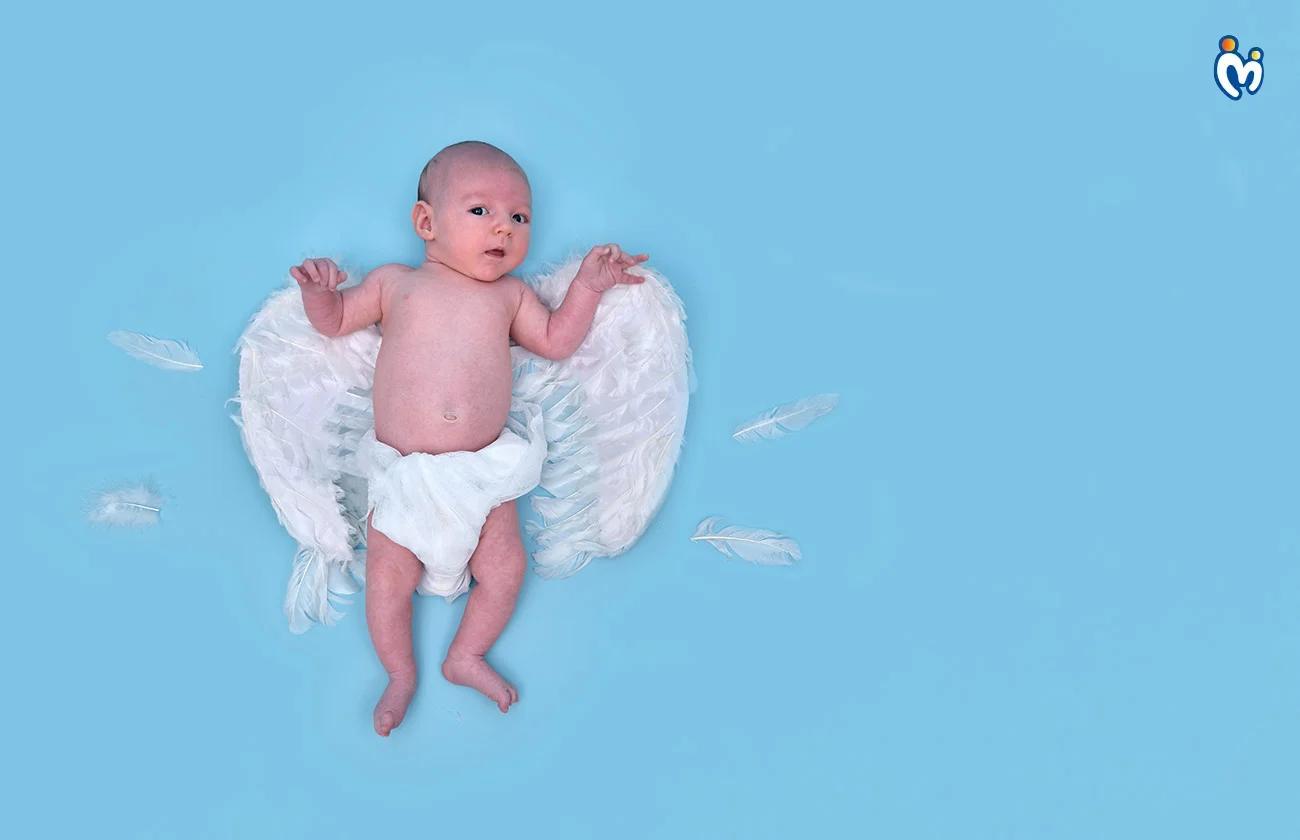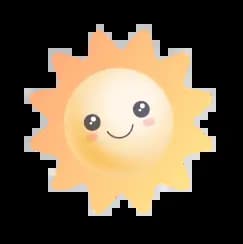Hello, mamy!
Isn’t it incredible how your newborn seems to move, flinch, and react in the tiniest ways? Those little fingers gripping yours, the sudden jerks, and even that adorable startle—they’re all part of your baby’s natural reflexes!
Newborn reflexes are instinctive movements that help babies adjust to the world outside the womb. They’re signs that your little one’s brain and nervous system are developing just as they should. But we know, mamie, that sometimes these tiny movements can raise questions—“Is this normal?” “Should I be concerned?”
Let’s walk through the different reflexes your baby will show in the first few months, understand why they happen, and know when to seek a doctor’s advice.
1. The Startle Reflex (Moro Reflex)
What it is: Have you noticed your baby suddenly throw their arms out wide, fingers stretched, as if reacting to a loud noise or sudden movement? That’s the Moro reflex, also known as the startle reflex.
Why it happens: This reflex is a survival instinct, helping babies respond to sudden changes in their surroundings. It’s triggered by loud noises, bright lights, or even the sensation of falling when being laid down.
What’s normal:
- Present from birth and usually disappears by 4-6 months.
- Happens randomly, especially when your baby is asleep.
When to check with a doctor:
- If your baby never startles at all.
- If the reflex persists beyond 6 months.
Mamy Tip: Swaddling your baby snugly before sleep can reduce sudden startles and help them rest better.
2. The Rooting Reflex
What it is: If you gently stroke your baby’s cheek, you’ll see them turn their head and open their mouth, ready to latch onto your breast or bottle.
Why it happens: This reflex helps babies find food naturally, guiding them towards the nipple for feeding.
What’s normal:
- Present from birth and fades around 3-4 months as babies learn to suck actively.
When to check with a doctor:
- If your baby doesn’t turn their head toward touch, as this could indicate issues with their nervous system.
- If your baby struggles to latch or suck properly.
Mamy Tip: If your baby seems fussy and doesn’t latch immediately, try a calm, dimly lit space to help them focus.

3. The Sucking Reflex
What it is: Babies instinctively suck on anything placed near their mouth-your finger, a pacifier, or a bottle nipple.
Why it happens: It’s nature’s way of ensuring babies can feed. Sucking also has a calming effect, which is why many newborns love pacifiers or thumb-sucking.
What’s normal:
- Begins in the womb and stays strong for the first few months.
- Some babies have a stronger sucking reflex than others.
When to check with a doctor:
- If your baby struggles to suck and swallow properly, which might affect feeding.
- If your baby doesn’t show a sucking response at all.
Mamy Tip: If you’re breastfeeding and baby seems to struggle, try different positions or consult a lactation expert for support.
4. The Grasp Reflex (Palmar Reflex)
What it is: Place your finger in your baby’s tiny palm, and you’ll feel a strong grip—as if they never want to let go!
Why it happens: This reflex is a leftover instinct from ancient times when baby primates had to cling to their mothers for safety.
What’s normal:
- Present from birth and fades by 3-6 months.
- Babies might even grab onto hair, necklaces, or anything within reach!
When to check with a doctor:
- If your baby doesn’t grasp at all.
- If the reflex remains beyond 6 months without your baby developing voluntary grasping.
Mamy Tip: As your baby grows, encourage them to grasp soft toys or your finger to build hand strength.

5. The Stepping Reflex
What it is: Hold your baby upright with their feet touching a flat surface, and you’ll see them make tiny stepping motions—as if trying to walk!
Why it happens: This early reflex prepares your baby’s muscles for walking later.
What’s normal:
- Seen in newborns and disappears by 2 months.
- Not related to actual walking ability later on.
When to check with a doctor:
- If your baby never shows the stepping reflex at all.
- If it persists beyond 2 months, which could indicate neurological concerns.
Mamy Tip: Don’t rush into baby walkers! Let your baby’s leg muscles develop naturally before introducing weight-bearing activities.

6. The Tonic Neck Reflex (Fencing Reflex)
What it is: When your baby turns their head to one side, you might notice that one arm stretches out while the other bends—just like a tiny fencer!
Why it happens: This reflex helps develop hand-eye coordination and prepares your baby for reaching and rolling.
What’s normal:
- Present from birth to 4 months.
- Baby’s arms naturally shift positions as they move their head.
When to check with a doctor:
- If your baby always keeps their head turned one way.
- If the reflex persists beyond 6 months.
Mamy Tip: Encourage baby to turn their head both ways by placing toys or talking to them from different angles.
A Little Reminder For You, Mamy
Your baby’s reflexes are nature’s way of protecting them and helping them grow. Most reflexes fade naturally as your little one develops better motor control.
However, if you ever feel uncertain about your baby’s movements, trust your instincts. You know your baby best! If something doesn’t seem right, a quick chat with your pediatrician can give you the peace of mind you need.
So for now, enjoy these adorable newborn quirks—they won’t last forever, and soon, your little one will be reaching, rolling, and exploring the world in new ways!
Which of these reflexes surprised you the most? Share with us, mamy! We’d love to hear your experiences.
FAQ's
Q. What is the grasping reflex in newborns and why is it important?
Ans.The grasping reflex is a natural newborn behavior where a baby automatically curls their fingers around anything that touches their palm. This reflex helps develop early motor skills and later supports coordinated hand movements. It usually fades by 5–6 months as voluntary control improves.
Q. What are the common reflexes in newborn babies?
Ans. Some of the most common reflexes in newborn babies include the rooting reflex, Moro reflex, grasping reflex, stepping reflex, palmar reflex, and sucking reflex. These are survival and developmental movements that indicate a healthy nervous system.
Q. What is the stepping reflex and when does it disappear?
Ans. The stepping reflex appears when you hold your newborn upright with their feet touching a flat surface—the baby makes stepping or walking motions. This reflex is present from birth and usually disappears by 2 months as muscle strength and coordination develop.
Q. What is the rooting reflex and how does it help with feeding?
Ans. The rooting reflex is when a baby turns their head toward a touch on their cheek or mouth. This reflex helps babies find the breast or bottle for feeding. It naturally fades around 4 months as the baby becomes more coordinated with feeding cues.
Q. What is the palmar reflex in babies?
Ans. The palmar reflex is similar to the grasping reflex—when something touches a baby’s palm, they tightly close their fingers around it. This reflex is an early sign of neurological development and typically fades by 4–6 months.
Q. What is the Moro reflex and why do babies show it?
Ans. The Moro reflex (also called the startle reflex) happens when a baby feels a sudden movement, loud sound, or a feeling of falling. The baby flings their arms out, then quickly brings them back in. It’s normal and usually disappears by 4–5 months.
Q. Why do babies move a lot in their sleep?
Ans. Many parents wonder, why do babies move a lot in their sleep? This happens because newborns spend more time in active (REM) sleep, where brain development occurs. During this stage, babies may twitch, stretch, grunt, or make small movements - all completely normal.
Q. When should I worry about abnormal reflexes in newborns?
Ans. You should consult a doctor if:
- A reflex is completely absent on one or both sides
- A reflex persists beyond the normal age
- Movements seem very stiff, jerky, or asymmetrical
- Your baby appears unusually floppy or unresponsive
- Timely evaluation ensures that any neurological concerns are addressed early.
Q. How can I stimulate healthy reflex development in my baby?
Ans. You can support reflex development by offering tummy time, gently touching your baby’s palms or feet, following feeding cues, and giving plenty of skin-to-skin contact. Responding to natural reflexes encourages smoother physical and neurological growth.
















